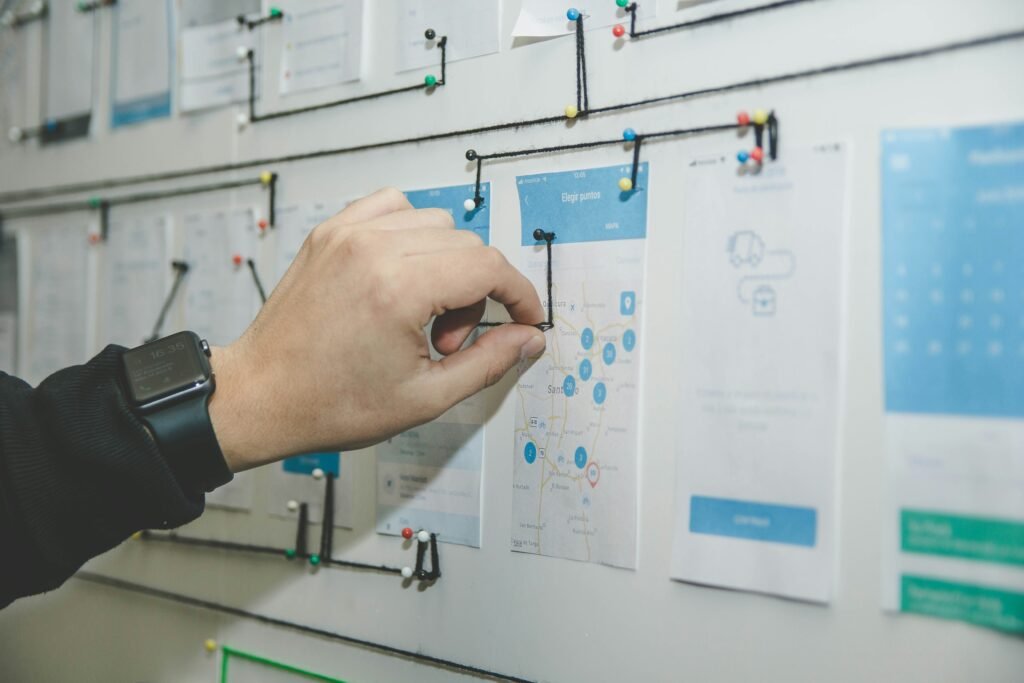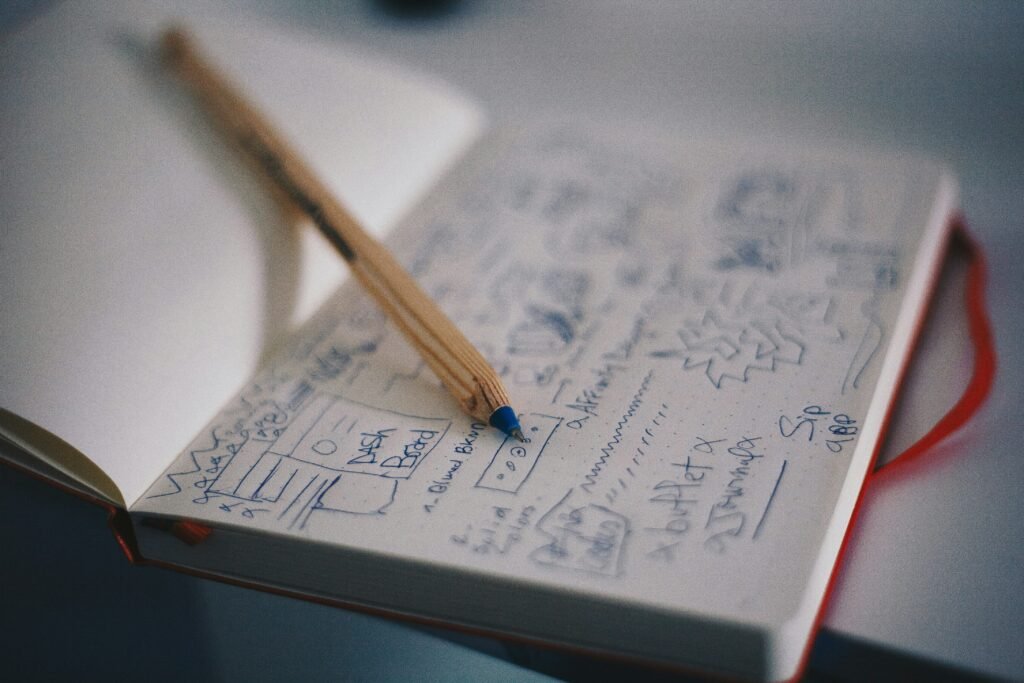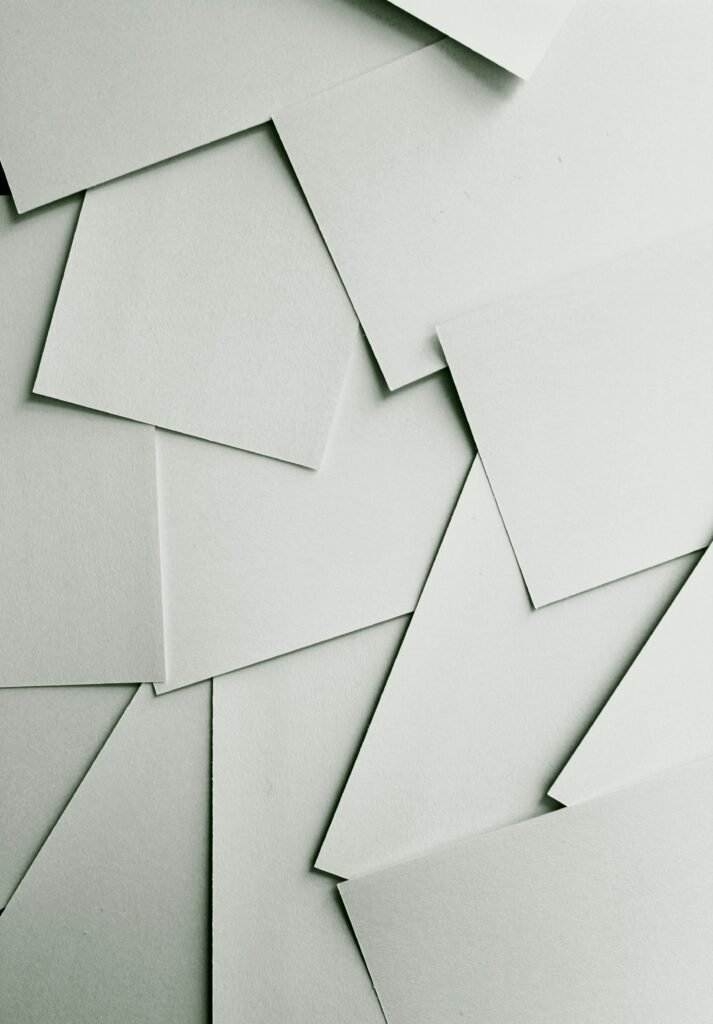In this article, you will discover the practical aspects of Western wallet design, exploring the functionalities that make them stand out. From their sleek and compact designs to their smart organization features, Western wallets have become a go-to accessory for many people. We will delve into the key factors that contribute to their practicality, such as the placement of card slots, the efficiency of money compartments, and the durability of materials used. Let’s dive into the world of Western wallet design and uncover the reasons behind their popularity and functionality.

This image is property of images.unsplash.com.
Materials Used in Western Wallet Design
Leather
Leather is the most common material used in the design of Western wallets. It is known for its durability and classic appearance, making it a popular choice among both men and women. Leather wallets are often made from cowhide, which is sturdy and resistant to wear and tear. Other types of leather, such as buffalo, pigskin, or ostrich, may also be used for a more unique and exotic look. The soft and supple texture of leather allows for ease of use and comfort when handling and storing your personal items.
Exotic skins
For those seeking a more luxurious and distinctive wallet, exotic skins offer a wide range of options. These wallets are typically made from animal hides such as alligator, crocodile, or snake. Exotic skin wallets can add a touch of sophistication and elegance to your everyday carry. However, it is important to ensure that these materials are ethically sourced and comply with wildlife conservation regulations.
Synthetic materials
In recent years, advances in technology have led to the emergence of synthetic materials for wallet design. These materials, such as faux leather or microfiber, offer a more affordable alternative to genuine leather. Synthetic wallets can mimic the appearance and texture of real leather while being more resistant to water and stains. They are also a popular choice for those who prefer a vegan or cruelty-free option. However, it is important to note that the durability and longevity of synthetic wallets may not compare to genuine leather.
Wallet Sizes and Shapes
Bi-fold wallets
Bi-fold wallets are the most traditional and widely used type of wallet. They are characterized by their simple design that folds once in the middle. Bi-fold wallets typically feature card slots on one side and a currency compartment on the other. The compact size of bi-fold wallets makes them convenient for everyday use and easy to fit in pockets or purses.
Tri-fold wallets
Tri-fold wallets offer additional storage compartments and organization compared to bi-fold wallets. As the name suggests, tri-fold wallets fold twice, creating three equal sections. This design allows for more card slots, currency compartments, and even additional pockets for storing coins or receipts. Tri-fold wallets are a popular choice for those who carry a larger number of cards or prefer to keep their belongings more organized.
Slim wallets
Slim wallets, also known as minimalist wallets, are designed for those who prefer a sleek and compact design. These wallets typically have a slim profile and focus on essential functionality. Slim wallets often feature a few card slots and a single currency compartment, allowing for easy access to your most important items. They are ideal for individuals who value simplicity and prefer to carry only the essentials.
Checkbook wallets
Checkbook wallets are designed for those who frequently use checks for payments or prefer to have their checkbook securely stored in their wallet. These wallets feature a built-in compartment specifically designed to hold and protect checkbooks. Additionally, checkbook wallets typically include card slots and currency compartments, providing ample space for all your financial essentials.
Zip-around wallets
Zip-around wallets offer maximum security and organization. These wallets feature a zipper closure that fully encloses the contents, ensuring nothing falls out or gets lost. The zipper closure provides added protection against pickpocketing and keeps your belongings secure. Zip-around wallets often have multiple card slots, compartments for currency, and additional pockets for coins or other small items. They are an excellent choice for individuals who prioritize security and prefer a more compact alternative to carrying a separate purse or bag.

This image is property of images.unsplash.com.
Internal Layout and Organization
Card slots
Card slots are a crucial feature in wallet design, providing a designated space for your credit cards, identification cards, and other essentials. Western wallets typically include multiple card slots to accommodate different cards and allow for easy organization. These slots are often made with durable materials and feature stitching or reinforcement for added strength and longevity. Card slots in Western wallets are designed to ensure a snug fit, preventing your cards from slipping out or becoming damaged.
Currency compartments
Currency compartments, also known as bill pockets, are an essential component of a wallet’s internal layout. These compartments are designed to securely hold various denominations of bills, ensuring their neat and organized storage. Western wallets may feature a single large currency compartment or multiple smaller compartments for different currencies or bills of various sizes. These compartments are typically made with durable materials and offer easy access to your cash when needed.
ID windows
ID windows provide a convenient and visible space for storing your identification cards, such as your driver’s license or work ID badge. Western wallets often feature an ID window with a clear plastic overlay, allowing for easy visibility and protection of your ID. This feature eliminates the need to remove your ID from the wallet when presenting it for verification, making it both practical and efficient.
Coin pockets
Coin pockets are a highly functional feature for individuals who frequently use coins as a form of payment or prefer to have loose change securely stored in their wallet. Western wallets may include a dedicated coin pocket with a secure closure, such as a zipper or snap, to prevent coins from falling out or getting lost. This ensures quick and easy access to your coins while keeping them organized and separate from your other belongings.
Receipt pockets
Receipt pockets provide a designated space for storing receipts, allowing for easy organization and reference. Western wallets may feature one or more receipt pockets, helping you keep track of your expenses or store important receipts for future use. These pockets are typically designed to accommodate a variety of receipt sizes and are made with durable materials to withstand the wear and tear of daily use.
Closure Mechanisms
Snap closures
Snap closures, also known as press-stud closures, are a common closure mechanism in Western wallets. These closures consist of a metal or plastic snap fastener that securely holds the wallet shut when not in use. Snap closures are easy to open and close with one hand, providing quick access to the contents of your wallet. They are often accompanied by a flap or fold-over design that adds a touch of elegance and classic Western style to the wallet.
Zipper closures
Zipper closures offer a high level of security and protection for your belongings. Western wallets with zipper closures fully enclose the contents, ensuring nothing falls out or gets lost. These closures are typically made with sturdy metal or nylon zippers that glide smoothly and withstand frequent use. Zipper closures are particularly suitable for individuals who prioritize security and want to keep their wallet’s contents secure.
Magnetic closures
Magnetic closures provide a convenient and elegant closure mechanism for Western wallets. These closures use small magnets embedded in the wallet’s flap and body to create a secure bond when closed. Magnetic closures are easy to open and close, while still offering a reliable hold. They add a touch of sophistication to the wallet’s overall design, making it a stylish choice for both formal and casual occasions.
Fold-over closures
Fold-over closures, also referred to as clasp closures, are a classic and timeless closure mechanism used in Western wallets. These closures often feature a metal clasp that securely holds the wallet shut when folded over. Fold-over closures are not only practical but also add a distinctive Western aesthetic to the wallet’s design. They come in various styles and finishes, allowing for personalization and added visual appeal.

This image is property of images.unsplash.com.
Decorative Features
Embossing
Embossing is a decorative technique commonly used in Western wallet design. This technique involves creating raised patterns or designs on the surface of the wallet through heat and pressure. Embossing adds texture and visual interest to the wallet, making it stand out and giving it a unique and personalized touch. Wallets may be embossed with intricate Western motifs, initials, or custom designs, allowing for individualization and reflection of personal style.
Stitching
Stitching is both a functional and decorative feature in Western wallet design. Quality stitching enhances the durability and longevity of the wallet by reinforcing the edges and seams. Western wallets often feature visible stitching, typically done with contrasting thread, to create a visually appealing design. Stitching can be simple and straight, or it can include intricate patterns, such as saddle stitching, for a more handmade and artisanal look.
Tooling
Tooling is a traditional technique used to create intricate designs and patterns on the surface of leather wallets. This technique involves using specialized tools to stamp or carve the leather, resulting in raised or indented designs. Western wallets may feature tooling inspired by cowboy and Western motifs, such as rodeo scenes, horseshoes, or Native American symbols. Tooling adds depth and character to the wallet’s design, making it a visually striking and unique accessory.
Conchos
Conchos are decorative ornaments often seen in Western wallet design. These ornamental discs are typically made of metal, such as silver or brass, and are adorned with significant Western motifs or symbols. Conchos can be attached to the wallet’s surface through screws or rivets, adding a touch of Western flair and personality. They serve as eye-catching accents, making the wallet stand out and reflecting the cultural influences of the Western lifestyle.
Inlays
Inlays are decorative elements that involve embedding materials such as leather, metal, or stones into the surface of the wallet. Western wallets may feature inlays in intricate patterns or designs, adding a unique and artistic touch. Inlays can be made with various materials, allowing for customization and personalization according to individual preferences. They create a visually appealing and distinctive wallet design that captures the essence of Western aesthetics.
Security Features
RFID blocking technology
RFID blocking technology is becoming increasingly relevant in wallet design to protect against electronic theft. Western wallets with RFID blocking feature a special lining or layer that prevents unauthorized scanning or reading of the electronic chips found in modern credit cards, passports, and IDs. This technology keeps your personal information safe from identity theft and ensures the security of your sensitive data.
Hidden compartments
Hidden compartments provide an additional layer of security and privacy in Western wallets. These compartments are discreetly integrated into the design and are not immediately visible to others. Hidden compartments can be used to store valuable items, such as emergency cash or small personal belongings, away from prying eyes. They give you peace of mind, knowing that your most valuable possessions are safely concealed within your wallet.
Chain attachments
Chain attachments, also known as wallet chains, are a practical and fashionable security feature in Western wallet design. These chains are attached to the wallet and secured to a belt loop or other anchor point, preventing the wallet from being easily lost or stolen. Wallet chains not only offer added security but also serve as a statement accessory, exuding a rugged and rebellious Western vibe. They are popular among motorcycle riders, outdoor enthusiasts, and individuals who value both style and practicality.
Durability and Longevity
Quality of materials
The choice of materials plays a significant role in the durability and longevity of Western wallets. High-quality leather, synthetic materials, or exotic skins are selected for their ability to withstand regular use and resist wear and tear. Genuine leather, particularly full-grain or top-grain leather, is known for its durability and ability to develop a rich patina over time. Synthetic materials used in wallet construction are often chosen for their water-resistance, stain-resistance, and overall durability. By selecting wallets made from quality materials, you can ensure that your wallet can withstand the test of time.
Stitching technique
The stitching technique employed in the construction of Western wallets greatly impacts their durability. Wallets with reinforced stitching along the edges and seams are less likely to unravel or suffer from premature wear. Quality stitching, performed with durable thread, ensures that the wallet holds up well under everyday use. Additionally, wallets with double stitching or saddle stitching techniques provide superior strength and resistance to fraying. By choosing a wallet with excellent stitching technique, you can be confident that it will withstand the rigors of daily life.
Reinforced corners
The corners of a wallet are often subject to the most stress and wear. To ensure longevity, Western wallets may feature reinforced corners that are either stitched or metal reinforced. This reinforcement prevents the corners from becoming worn or damaged over time, significantly extending the lifespan of the wallet. Reinforced corners offer added durability and provide peace of mind, knowing that your wallet will continue to look its best for years to come.
Price Range
High-end designer wallets
High-end designer wallets are crafted with premium materials, intricate detailing, and superior craftsmanship. These wallets bear the name and reputation of well-known luxury brands, providing a symbol of status and exclusivity. High-end designer wallets often feature unique design elements and special features that set them apart from other options. However, their luxury status comes with a higher price tag, making them a significant investment for those with discerning taste and a desire for the best that Western wallet design has to offer.
Mid-range brands
Mid-range brands offer a balance between quality, functionality, and price in Western wallet design. These brands emphasize value for money by using high-quality materials and ensuring skilled craftsmanship, without the extravagant price associated with luxury brands. Mid-range wallets often feature a wide range of design options and styles to suit different tastes and preferences. Choosing a mid-range brand allows you to have a well-crafted, durable, and stylish wallet without breaking the bank.
Affordable options
Affordable options are available for those seeking a Western wallet at a budget-friendly price. These wallets are designed to be accessible to a wider range of customers while still offering functionality and style. Affordable wallets may be made from synthetic materials or lower-grade leather, but they still provide the basic features needed for everyday use. While they may not offer the same durability or luxuriousness as higher-priced options, affordable wallets allow individuals to enjoy Western wallet design without straining their budget.
Personalization Options
Initials or name embossing
Many Western wallets offer personalization options, such as initials or name embossing. This allows you to add a personal touch and make your wallet uniquely yours. Embossing can be done in various fonts and styles, providing a range of customization options to suit your preferences. Personalized wallets make for excellent gifts and can be cherished for a lifetime, representing your individuality and personal connection to Western aesthetics.
Custom engravings
Custom engravings offer another way to personalize your Western wallet. Engravings can be done on metal components, such as snaps or conchos, or even directly on the surface of the wallet itself. This customization option allows for unique designs, symbols, or messages to be permanently etched onto the wallet, creating a one-of-a-kind accessory that reflects your personal style and tastes.
Choice of colors
Western wallets often offer a variety of color options to cater to different style preferences. While classic colors such as brown and black are predominant, many wallets also come in vibrant hues or unique color combinations. Choosing a wallet in your preferred color adds a personal touch and allows you to express your individuality. Whether you prefer a classic, subdued tone or a bold, eye-catching color, the choice is yours to make.
Cultural Influences on Western Wallet Design
Cowboy culture
Western wallet design is deeply influenced by cowboy culture, drawing inspiration from the rugged and iconic style associated with the American West. These wallets often feature elements reminiscent of traditional Western attire, such as leather, stitching, and decorative accents. Western wallets pay homage to the rich history and imagery of the cowboy lifestyle, reflecting the values of freedom, independence, and resilience.
Native American motifs
Native American motifs are commonly incorporated into Western wallet design, reflecting the cultural heritage and indigenous art forms of Native American tribes. These motifs may include geometric patterns, intricate beadwork, or symbolic representations of nature and spirituality. By incorporating Native American motifs, Western wallets pay tribute to the traditions, stories, and artistry of Native American culture, adding depth and richness to their design.
Rodeo and western fashion trends
Rodeo and Western fashion trends have a significant impact on Western wallet design. Wallets may feature elements associated with rodeo culture, such as motifs of lassos, horseshoes, or cowboys on horseback. Western fashion trends also influence the colors, materials, and styles used in wallet design. Western wallets embrace the spirit of adventure, ruggedness, and individuality associated with Western fashion, capturing the essence of Western lifestyle and aesthetics.
In conclusion, Western wallets are carefully crafted accessories that incorporate a range of functional and design features. From the selection of materials to the internal layout, closure mechanisms, and decorative elements, every aspect of Western wallet design is thoughtfully considered. Whether you prefer a traditional bi-fold wallet or a stylish zip-around, Western wallets offer a combination of practicality, durability, and personalized style. The cultural influences of cowboy culture, Native American motifs, and rodeo fashion trends make Western wallets distinctive and reflective of the rich history and aesthetics of the American West. Regardless of your budget, personalization preferences, or needs, there is a Western wallet that can accompany you on your daily adventures and serve as a testament to your unique style.
